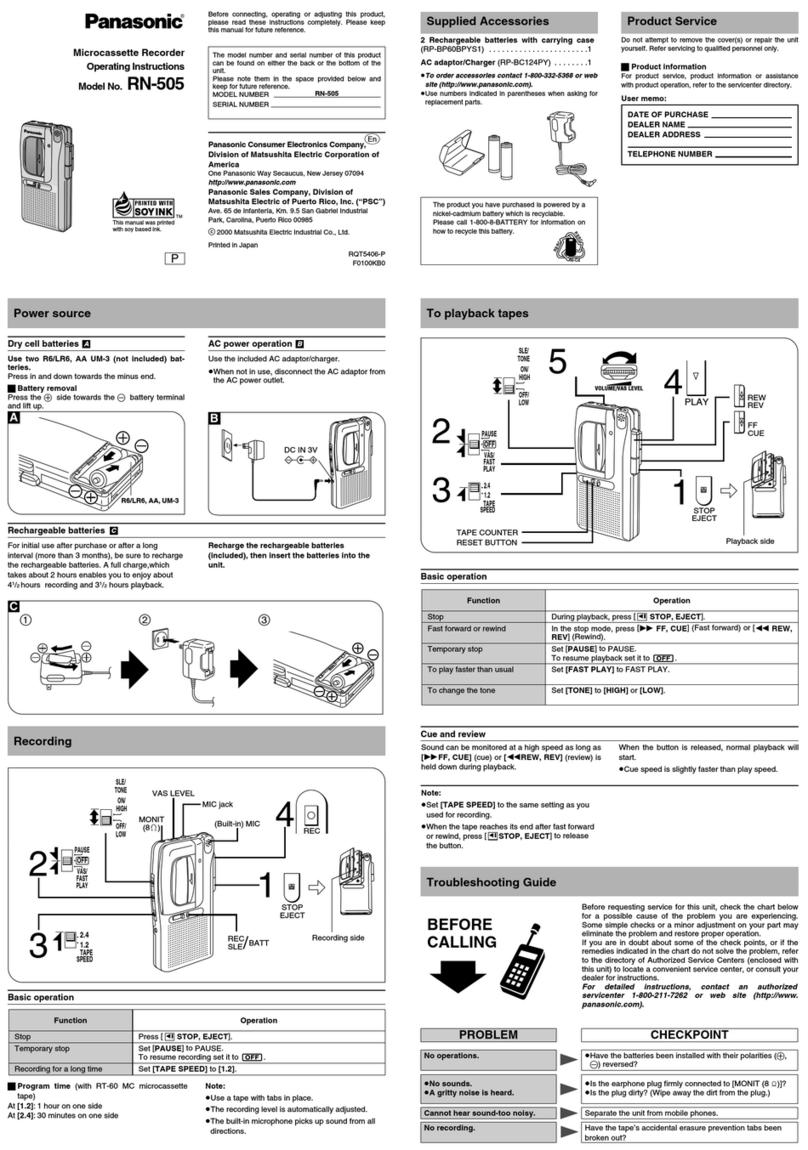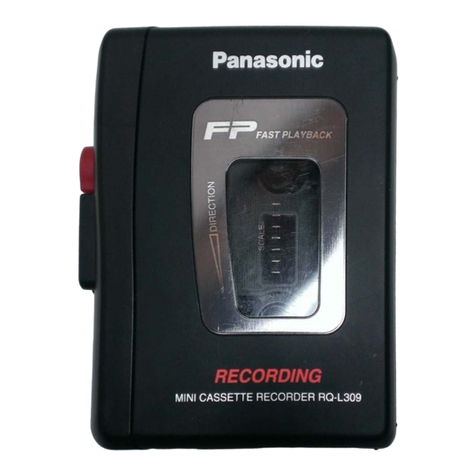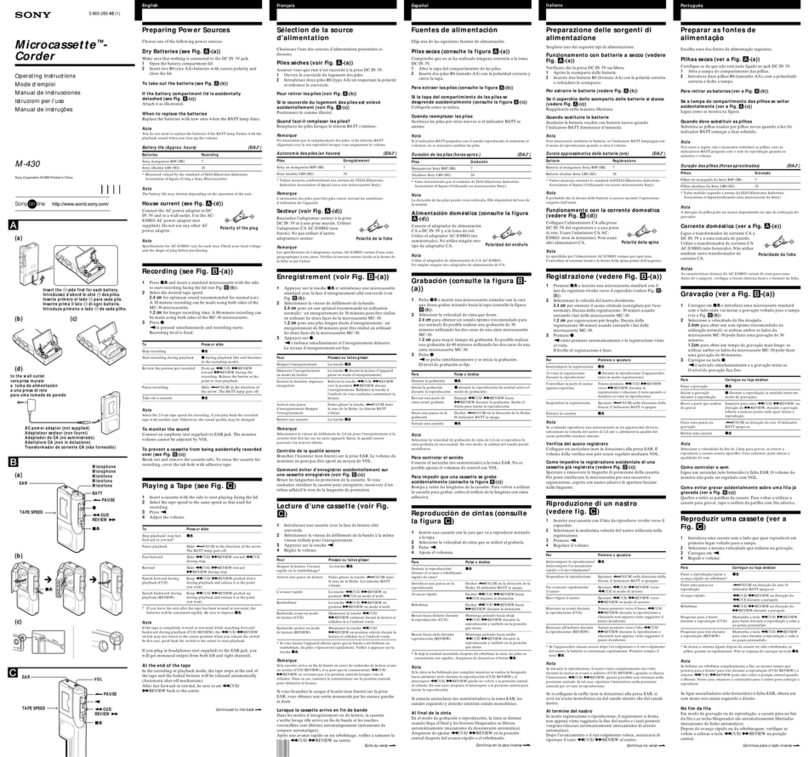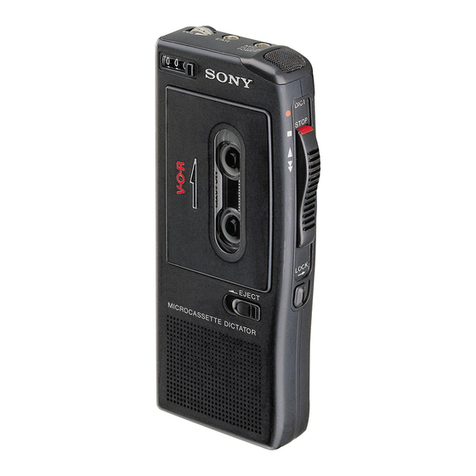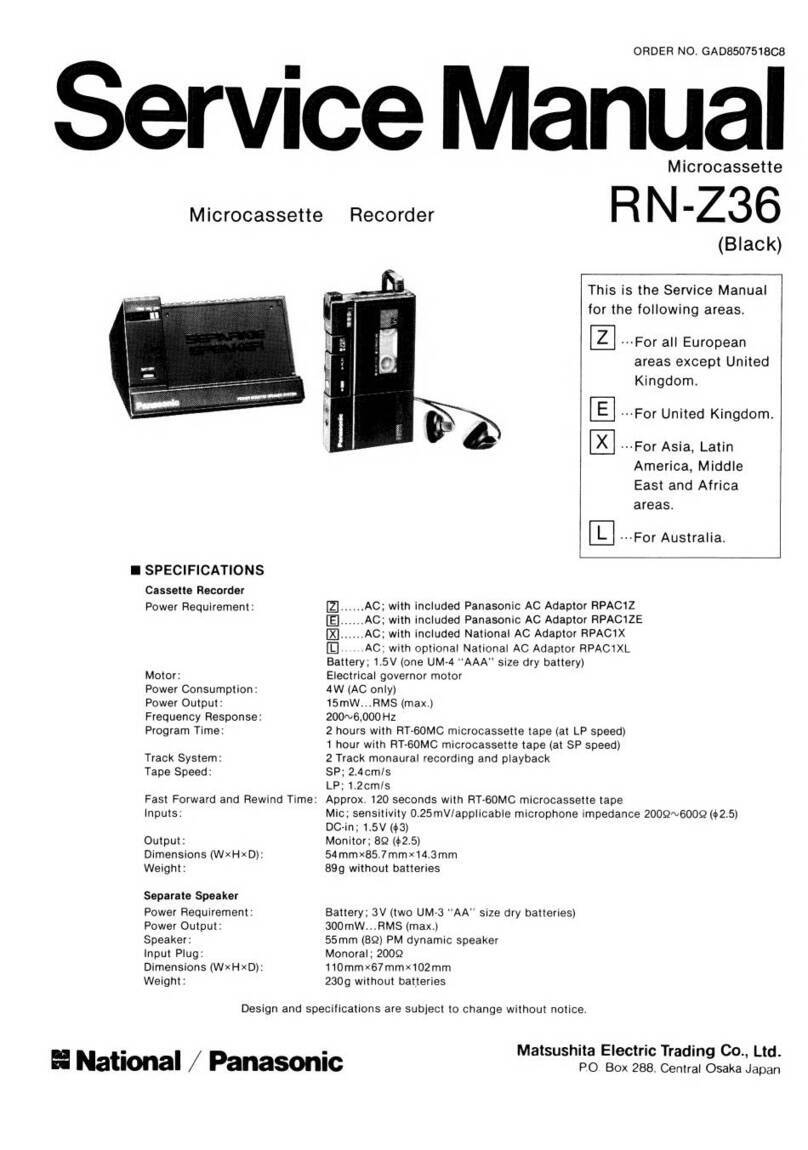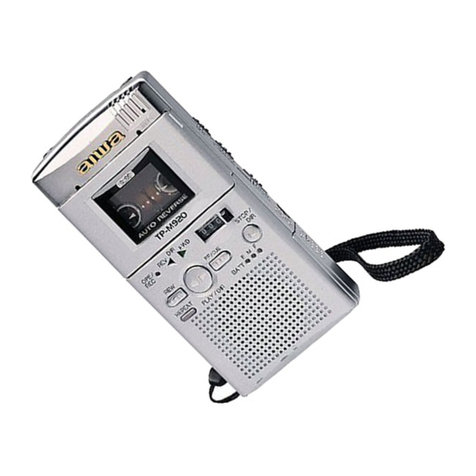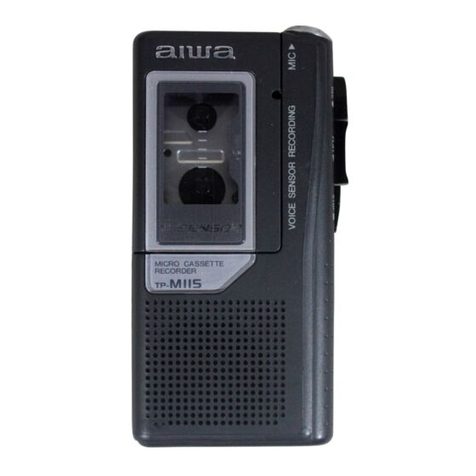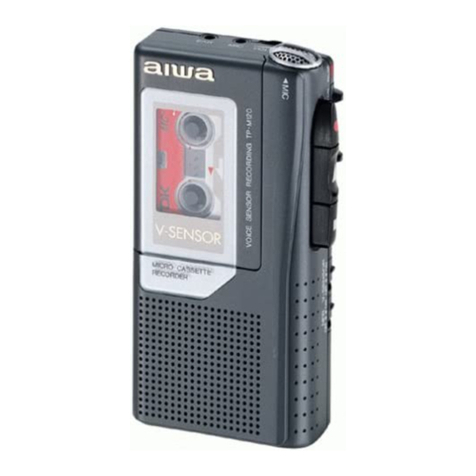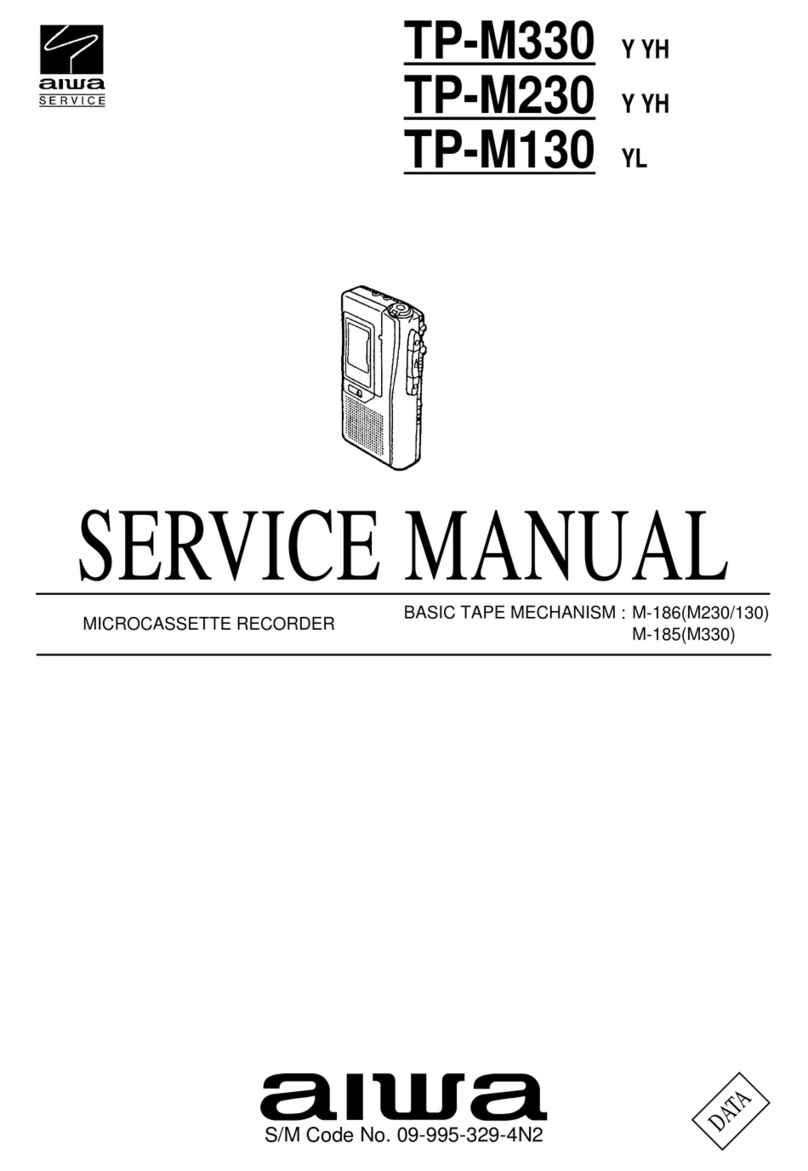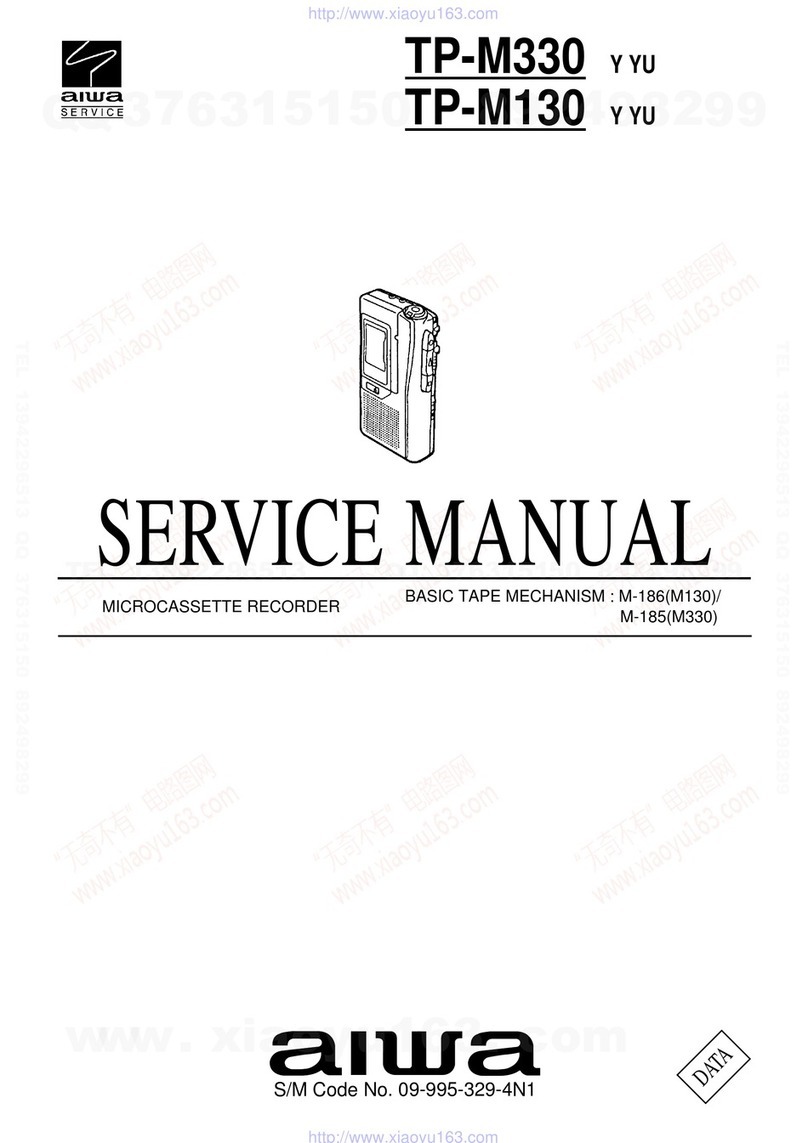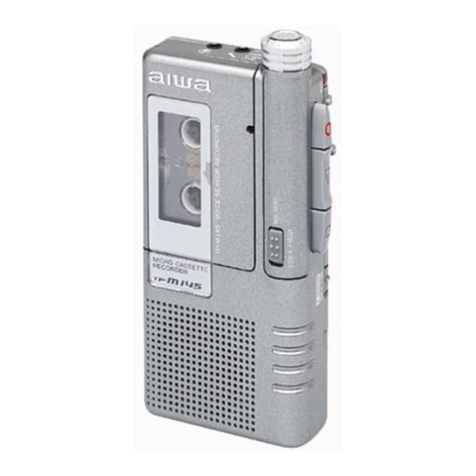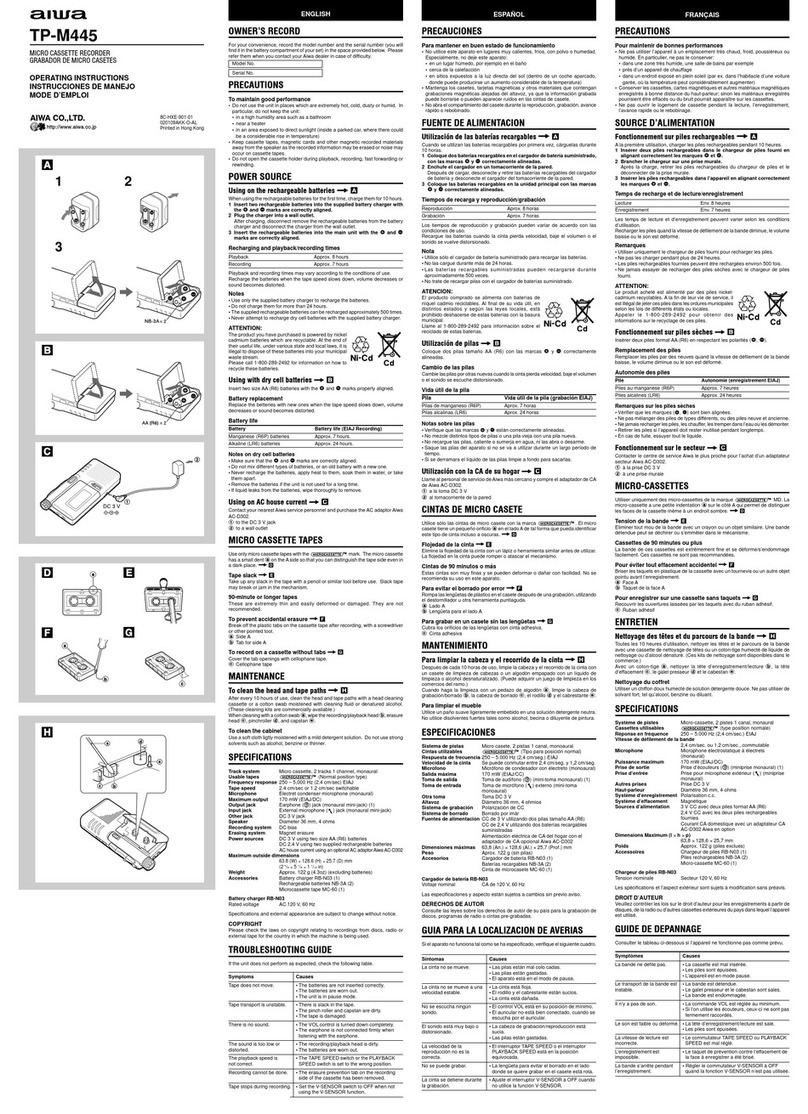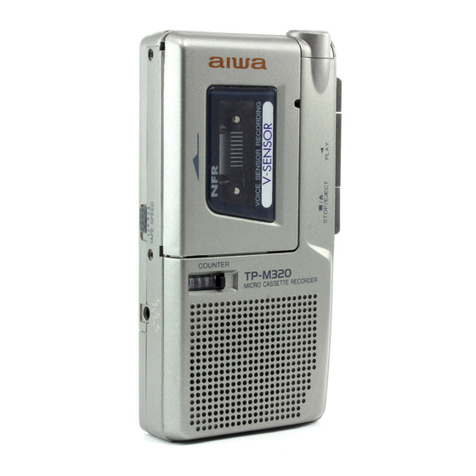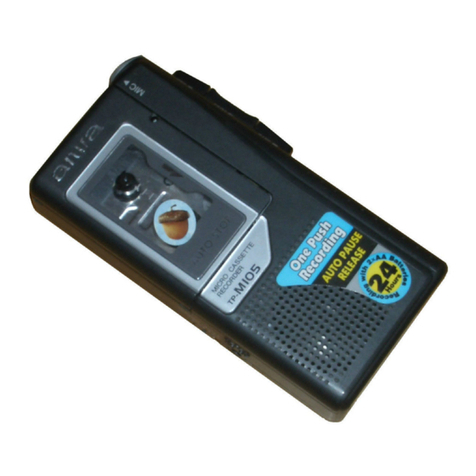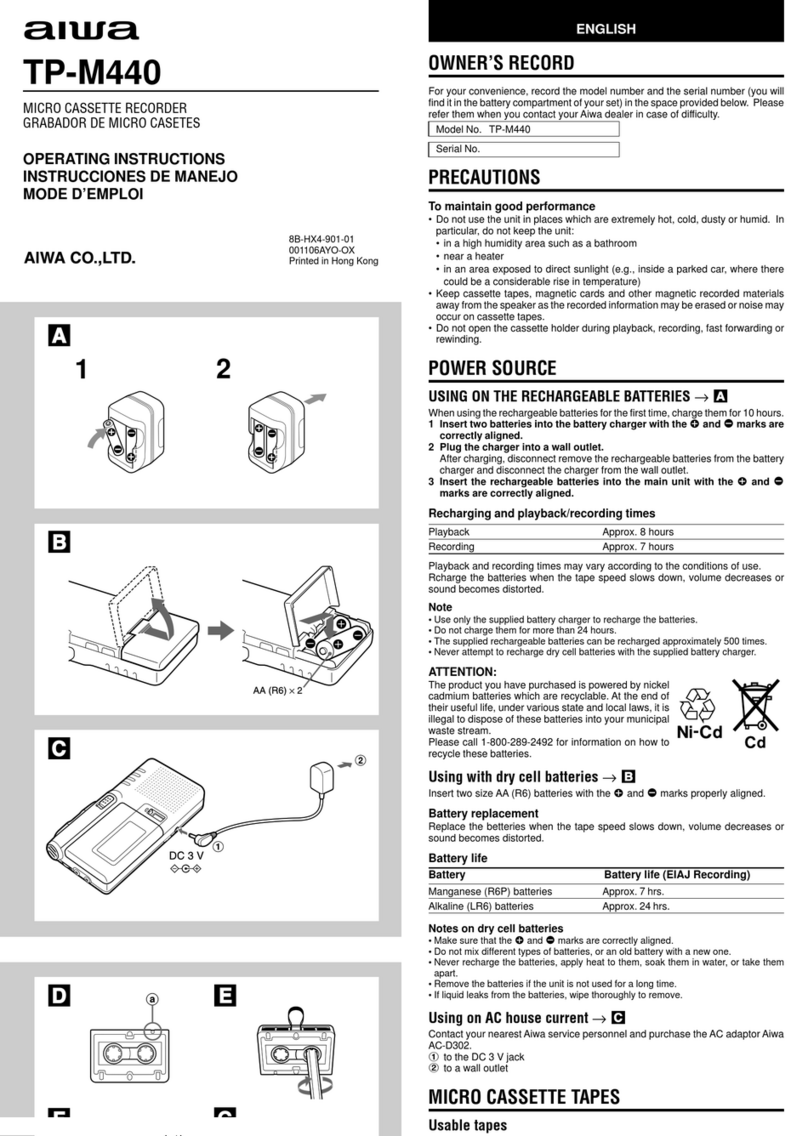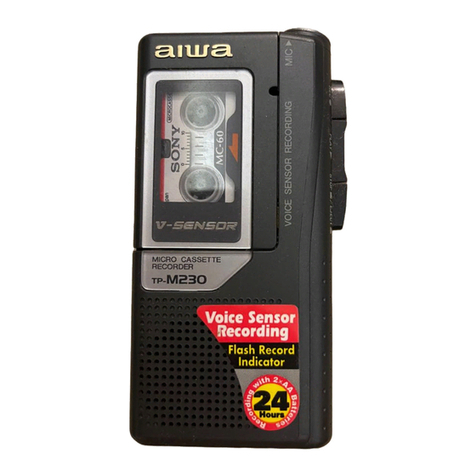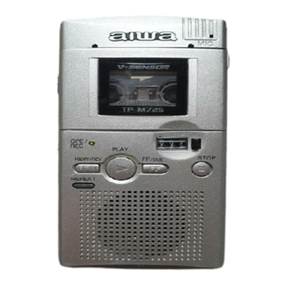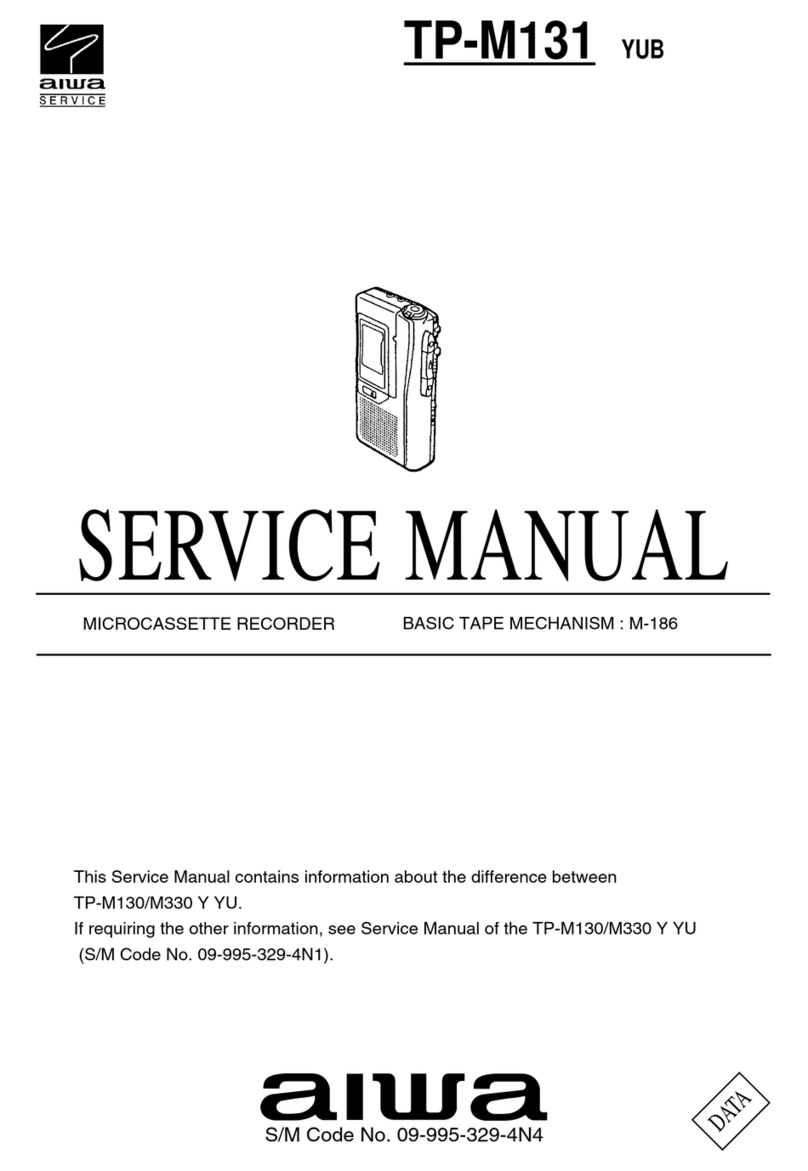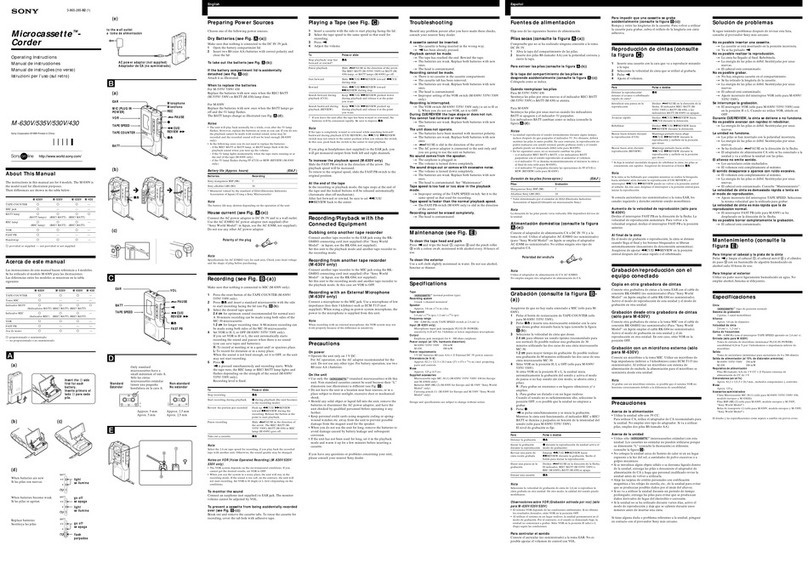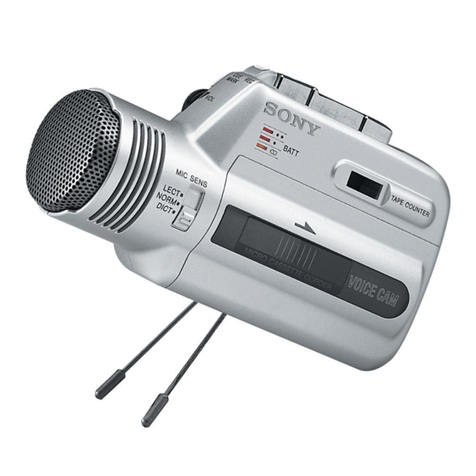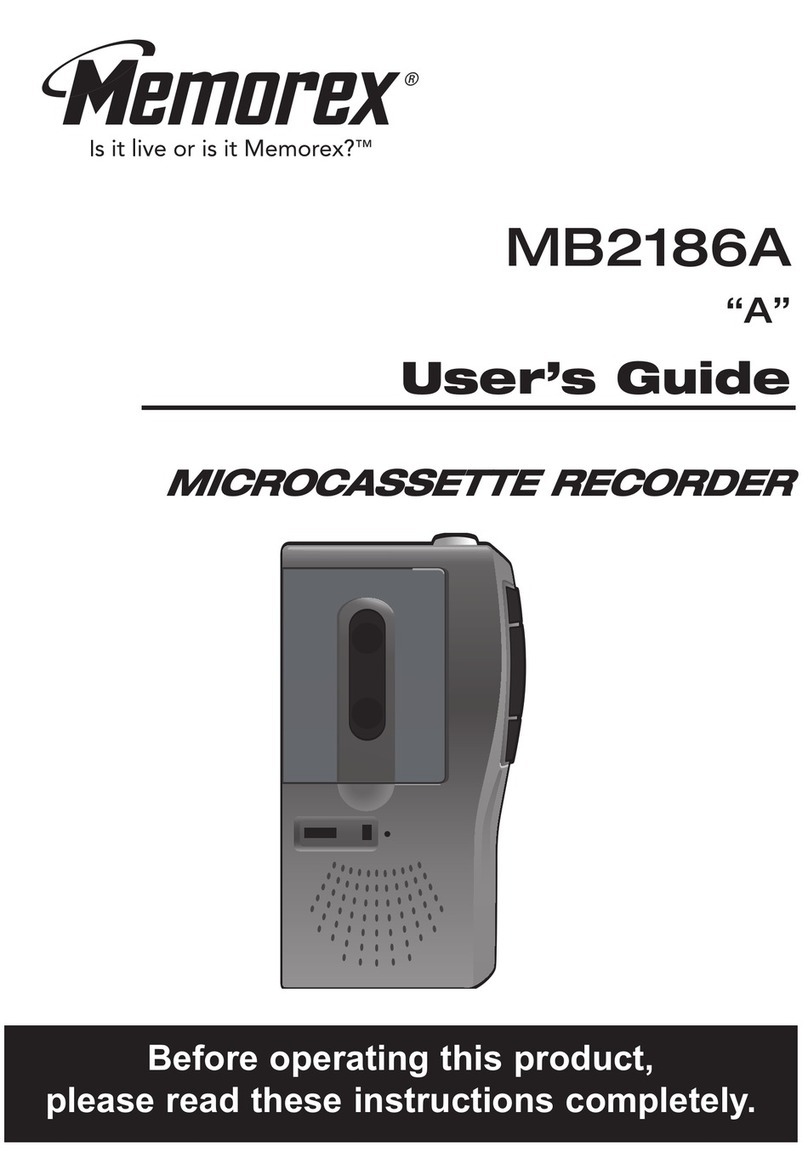ENGLISH
INSERTING A CASSETTE →H
Open the cassette holder and insert a cassette with the recording/playback side
afacing the cassette holder.
RECORDING FROM THE BUILT-IN
MICROPHONE →I
1 Insert a cassette.
2 Set the TAPE SPEED switch.
2.4: Normal recording
1.2: Double time recording
E.g.) A 60-minute recording can be made using both sides of the MC-30
microcassette.
3 Press the wbutton to start recording.
The xbutton is depressed simultaneously and the REC indicator lights. The
indicator lights and goes out according to the voice input. Orient the built-in
microphone to the sound source.
Basic operation
To stop recording Press the sbutton.
To pause recording Set the PAUSE switch to a.
The REC indicator lights.
To resume recording, set the switch to OFF.
• The PAUSE switch is released automatically when the sbutton is pressed.
When the end of the tape is reached
The tape stops and the wand xbuttons are released automatically.
To select the sensitivity of the microphone
Set the MIC SENS switch according to the location of recording.
HIGH: When recording in a conference etc.
LOW: When recording a dialogue nearby
To monitor the sound that you are recording
Use the earphone referring to “Listening with the earphone” below. You cannot
monitor the sound currently being recorded through the speaker.
Note
The standard speed of the micro cassette recorder is 2.4 cm/sec. If you record a tape
with the TAPE SPEED switch set to 1.2 and play it back on another micro cassette
recorder, playback sound may not be correct.
Recording from an external microphone →J
To record sound with more clarity, use an optional external microphone.
The plug-in-and-power up type microphones can be used for this unit.
Connect the microphone to the EXT MIC jack and set the microphone near the
sound source.
Note
When recording from an optional external microphone, move the microphone away
from the main unit or the earphone to prevent howling.
To record only above a preset sound level → K
Recording will start when the unit detects sound above a certain preset level. If
the unit does not detect the sound for about 4 seconds, recording will pause.
This prevents tape waste and empty recording.
1 Set the V-SENSOR∗switch to ON.
2 Adjust the sensor level.
Turn the VOL (V-SENSOR LEVEL) control in the direction of ato lower the
sensorlevel. Generalbackgroundnoisewill not be recorded, and onlyrelatively
loud sounds will be recorded.
Turn the VOL (V-SENSOR LEVEL) control in the opposite direction of bto
increase the sensor level. Even relatively quiet sounds will be recorded.
3 Press the wbutton to start recording.
∗Voice Sensor Recording
Sensor level adjustment
The ideal sensor level varies according to the loudness of the source sound.
Experimentwiththesensor level in advance to determinetheoptimumlevelbefore
you start an important recording. Normally, align the white mark cof the
VOL (V-SENSOR LEVEL) control with the part dfirst, then adjust it according to
surrounding conditions.
Note
When the recording resumes after sound detection, the very first sounds may not be
recorded.
To record from another unit →L
Connect the other unit to the EXT MIC jack of this unit, using the appropriate
connecting cords.
aTo connect to stereo source equipment
bTo connect to monaural source equipment
Note
• The connecting cords may vary according to the type of source equipment. Before
connecting a unit, read the operating instructions of the connected unit.
• If the volume setting of the source equipment is too high, the recorded sound may be
noisy or distorted. Be sure to set the volume of the source equipment to a moderate
level.
PLAYBACK M
J
K
H
L
Attenuation Cable
I
